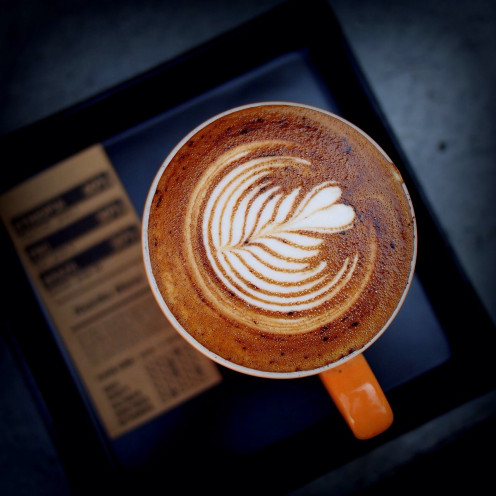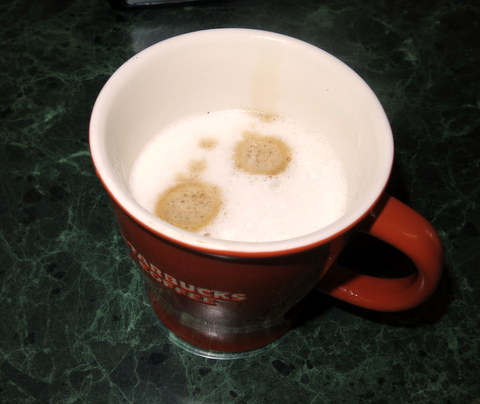- HubPages»
- Food and Cooking»
- Beverages»
- Coffee
How to Make a Latte or Cappuccino
Pick Your Poison

Experiment With These Coffee Add-Ins:
- Add chocolate syrup to your latte and sprinkle with chocolate shavings.
- Try a tablespoon of pumpkin puree, a little agave and some pumpkin pie spice.
- Stir in a teaspoon of peppermint schnapps.
- Add a dash of Frangelico for hazelnut flavor.
- Substitute eggnog for the milk and top with whipped cream and nutmeg.
- Melt a few chocolate chips in the mug before adding steamed milk and espresso.
Latte vs. Cappuccino
Basically, the difference between a latte and a cappuccino lies in proportions. How much espresso goes into each coffee drink depends on where in the world you order it. Formulations even vary from region to region in the United States.
Cappuccinos are usually made of one part espresso, one part steamed milk and one part foam. The abundance of foam and less steamed milk makes cappuccinos pack stronger coffee flavor. It also leaves the drinker with a foamy mustache.
Lattes boast a higher percentage of steamed milk and very little foam, which means they weigh in heavier than cappuccinos. Lattes tease the palate with milder coffee flavor. American lattes are a milkier version of France's cafe au lait.
Homemade Cappuccinos & Lattes
As a home cappuccino or latte maker, though, you don't need to get bogged down in technicalities. Experiment with proportions and find out what you like best. If you enjoy stronger coffee flavor, start with a double shot of espresso and add a little steamed milk and as much foam as you like for texture. Skim milk is easier to foam; whole milk has richer flavor. If you prefer milder coffee drinks you can pull a single shot of espresso and add as much steamed milk as you like. Try a final dusting of ground cinnamon, nutmeg or vanilla powder for a change of pace.
Lovers of sweetened coffee drinks can try flavored syrups. At your local grocery store you might find raspberry, French vanilla, caramel, hazelnut or exotic flavored syrups like tiramisu. I personally am partial to amaretto liqueur stirred into my lattes. To cut back on expenses I even make my own. For the recipe, click here and scroll down to the bottom of the page to find the capsule: Homemade Amaretto Liqueur Recipe.
Latte Art


Why the Mr. Coffee/Oster Barista Espresso Maker?
Mr. Coffee Espresso Maker, sold under the Oster name in South America, is economical and easy to use. You don't need to take a barista course to produce restaurant-quality coffee drinks. It produces copious amounts of foam from any milk you choose, whether skim or whole. The removable reservoir can conveniently be stored in the refrigerator and breaks down for fast cleaning.
The pump of this inexpensive espresso maker is strong enough to extract rich crema and will last for years with daily use. Did I mention how quickly this machine puts out espressos, lattes and cappuccinos? These coffee drinks are just as delicious as anything you can buy in the local coffee shop and much less expensive. The machine even features a custom button if you get bored with the fully-automated process.
The Mr. Coffee Barista Espresso Maker is, hands down, the best model on the market for the price. Any espresso maker sold at a lower price does not have a powerful enough pump to extract the crema from the coffee which is what gives espresso its distinctive flavor.
We have tried several expensive espresso makers and found them so difficult to use and clean that we eventually quit using them. Pod machines are simple to use and clean, but you will also spend a lot of money on expensive pods in the long run. This machine is the way to go when it comes to budget, ease of use and drink quality.
When learning to make espressos these are the most important techniques to master: grinding the coffee beans and tamping the portafilter. Please see the capsule below, "How to Choose, Grind & Tamp the Coffee", for more information.
Photo Gallery: How to Make a Latte or Cappuccino at Home




Learn How to Make Latte Art
Step-by-Step Instructions For Mr. Coffee Barista Espresso Maker
- Remove milk reservoir from the refrigerator and slide into the machine.
- Turn on the espresso maker. It takes 3 minutes for the machine to warm up.
- Grind the coffee beans and tamp the grounds into the portafilter using 30-40 pounds of pressure.
- Once the machine's lights have stopped blinking, push the double espresso shot button (without adding the portafilter). Put coffee mug in place. The machine will run hot water into the mug, warming it up.
- Discard the hot water. Install the portafilter. Reposition the mug under the milk spout.
- Press button for either a single or double latte or espresso.
- Let the machine do the work. Adjust milk dial for more or less foam.
- After the steamed milk and froth has been dispensed, the machine will pull a single or double espresso shot.
- If you'd like to try latte art, you'll need a steel frothing pitcher. Allow the machine to dispense steamed milk and froth into the pitcher instead of the mug. Remove the pitcher after the milk has been dispensed and replace it with the mug. Once the espresso shots have been pulled you can experiment with pouring the milk over the top of the espresso, forming a rosetta or other design.
A Perfectly Tamped Portafilter


How to Choose, Grind & Tamp the Coffee
As is to be expected, fresh ingredients and proper technique are of utmost importance in espresso making. Contrary to popular belief, espresso doesn't have to be made with dark roast or espresso roast coffee beans. Choose whichever roast you like best. Just be sure the beans are fresh. Buy distilled water for the cleanest tasting lattes or cappuccinos.
Grind is the most important part of the espresso making process. A burr grinder is highly recommended and takes the guess work out of coffee grinding. Just dial the grinder to the preferred setting and it does the hard work for you. Coffee ground in a burr grinder tastes better, too, since the grinder won't heat up the grounds and make them bitter.
If you have yet to invest in a burr grinder, you can still use a handheld electronic model. We count to 20 seconds for a fine grind that works with our Mr. Coffee Barista Espresso Maker. Coffee ground just right for making espresso are almost the consistency of powder. If you grind the coffee too long (grounds are too fine), though, hot water won't pass through the grounds and will cause the machine to "choke". You will have a big, watery mess to clean up. If you don't grind the coffee long enough (grounds are too coarse), water will pass through too quickly to extract the crema which is key to good espresso flavor.
It takes 7-9 grams of ground coffee to make one espresso shot. One pound of coffee should yield 32 double shots of espresso. We don't weigh our ground coffee, though, and usually end up getting about 25 double shots of espresso from each pound of coffee beans.
Another important point to remember is to tamp the grounds into the espresso maker's portafilter with 30-40 pounds of pressure. Try pressing on a bathroom scale to get a general idea of the amount of pressure you'll need. Practice will help you to get it just right.
Try Affogato: A Simple but Elegant Dessert

How to Make Affogato
Affogato literally means "drowned" in Italian. A simple dessert of just espresso and ice cream, it can be spiked with any liqueur or flavored syrup you can imagine. My favorite combination is good-quality vanilla bean ice cream, a shot of espresso and a glug of amaretto liqueur or dark rum.
Affogato is elegant enough to serve to guests and is also extremely addictive. In fact, I have a friend (who shall remain nameless) who purchased an espresso maker just so she could enjoy affogato whenever it strikes her fancy.
If you'd like a double dose of coffee wonderfulness, make your own homemade espresso ice cream and drizzle it with a double shot of espresso. Click here for a great recipe: Homemade Coffee Ice Cream.
Coffee Grounds



What To Do With Used Coffee Grounds
Now the only question left is: what can I do with all those leftover coffee grounds? Here are a few ideas:
- Use old coffee grounds to mulch acid-loving plants such as hydrangeas, azaleas and rhododendrons. As a bonus, coffee grounds discourage pesky garden snails.
- Add coffee grounds to the compost pile.
- Make a coffee scrub to eliminate toxins, reduce the look of cellulite and tighten and brighten skin. Click here for Suzie HQ's DIY Homemade Coffee Scrub for Caffeine Addicts.
- Soak coffee grounds in hot water to sepia stain your old white cotton curtains, tablecloths and pillow cases for a "shabby chic" look in your bedroom.
- If fish juices have come in contact with your kitchen counter tops, rub them vigorously with coffee grounds. Vacuum up the grounds and voila...an odor-free kitchen.
- Rid your freezer or refrigerator of food odors. Place a bowl or two of used coffee grounds in the fridge and leave it overnight. In the morning, the foul odors will have been replaced with the fresh smell of ground coffee. Now that's easy deodorization!
- If you have medium or dark hair, massage your scalp with coffee grounds and rub them through your hair before shampooing. Your hair will be soft and silky and your scalp flake-free.
- Save old coffee grounds to scrub out dirty pots and pans.
- Float coffee grounds in your bath water. The coffee bath will rid your body of toxins, leaving your skin silky soft and slightly "tanned".








